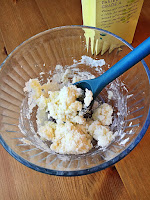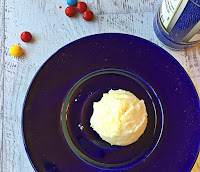Teaching Grammar in Context to Language Learners
Teaching students grammar rules isn't the only way to increase proficiency in the target language. The students can't just learn ABOUT the language. They also need to develop skills with USING the language. We need to make good decisions when choosing materials and classroom activities ... to first bombard our students with comprehensible input using a particular grammar focus, and then pushing our students to use the language.
1. Choose appropriate comprehensible materials for students to read, listen & watch the language being used in context.
2. Play games using the new grammar structures. Here are some game ideas and I like these a lot too.
3. Provide students the opportunity to write in a controlled manner. I like using build-a-books ... and I want to share a build-a-book freebie with you! {including directions for how to use them}. Find the Spanish build-a-book freebie here, and the French build-a-book freebie here.
If you like the build-a-book concept and would like more, find all of my French build-a-books here and my Spanish build-a-books here.
Is there a build-a-book you need and don't see available? Comment below and I'll add it to my to do list!

How to Make Input Comprehensible for Early Language Learners
How to make Input Comprehensible for Early Language Learners
We know we need to teach in the target language and use comprehensible input --- language at the level of our students so they understand most of what we say ... just enough so they can understand the message, but adding new words and structures to push them to expand their knowledge.
So how do we do that with our early language learners?
1. Use songs. Songs can be repeated daily and reinforce vocabulary and sentence structure. Write your own, or purchase from others.
2. Play vocabulary learning games. Let the students have a silent period where they are just listening to the new language being repeated over and over, and then move on to games where the kids need to speak. Find some game ideas here.
3. Use visuals - photos, images, videos, puppets, the actual item you are talking about. Are your students learning the vocabulary for school objects? Use a real book, pen, pencil, notebook ... Hold up your visuals while you are speaking to help students understand.
4. Read or tell stories ... But they need to be linguistically appropriate. Remember that your students should understand what is going on. Make up silly stories - I like to use a puppet and be silly. Maybe the puppet has packed his backpack for the first day of school and the students and I tell the puppet what he will need. But of course when we open up the backpack it is filled with unnecessary things like a camera, a chocolate bar ... Empty out that backpack and have the students help you refill it with what the puppet needs for school.
Is writing linguistically appropriate stories not your forte? I can help!
Whatever we choose to use as the content of our lesson, we should:
We know we need to teach in the target language and use comprehensible input --- language at the level of our students so they understand most of what we say ... just enough so they can understand the message, but adding new words and structures to push them to expand their knowledge.
So how do we do that with our early language learners?
1. Use songs. Songs can be repeated daily and reinforce vocabulary and sentence structure. Write your own, or purchase from others.
2. Play vocabulary learning games. Let the students have a silent period where they are just listening to the new language being repeated over and over, and then move on to games where the kids need to speak. Find some game ideas here.
3. Use visuals - photos, images, videos, puppets, the actual item you are talking about. Are your students learning the vocabulary for school objects? Use a real book, pen, pencil, notebook ... Hold up your visuals while you are speaking to help students understand.
4. Read or tell stories ... But they need to be linguistically appropriate. Remember that your students should understand what is going on. Make up silly stories - I like to use a puppet and be silly. Maybe the puppet has packed his backpack for the first day of school and the students and I tell the puppet what he will need. But of course when we open up the backpack it is filled with unnecessary things like a camera, a chocolate bar ... Empty out that backpack and have the students help you refill it with what the puppet needs for school.
Is writing linguistically appropriate stories not your forte? I can help!
Whatever we choose to use as the content of our lesson, we should:
- Paraphrase - remember to make sure the message is understood. Use familiar structures and build on them.
- Slow down our speech
- Use our tone of voice to aid in getting the message across - in my silly puppet lesson I will use a tone of voice that says "Are you crazy?" when I pull the absurd things out of the backpack.
- Use gestures
- Use yes/no questioning to check for comprehension - I will ask in the target language "Is there a pencil in the backpack?"
- Repeat, repeat, REPEAT!!! Re-read, re-watch, re-listen, re-tell over and over and over and over again. With each repeat, try pausing and allowing the students to finish your sentences or do the retelling of the story. As we add an item to the backpack, one at a time, I will say in the target language, "Now Mr. Puppet has a pencil in his backpack." "Now Mr. Puppet has a pencil and a book in his backpack." "Now Mr. Puppet has a ______ (pause and allow the class to say it) and a _____, and a _____ in his backpack."
What strategies do you use to help your students understand the language you use in the classroom? Comment below!
Quick & Easy Day of the Dead Sugar Candy Skulls
October! Can you smell the sugar in the air? Let's make candy skulls to celebrate the day of the Dead!
#What'sABitMoreSugar
I love this recipe because the candy prep time is minimal and they do not need to be baked. I've been able to mix up during class time and still have the students make these during class periods as short as 20 minutes!
Ingredients
4 ounces unsalted butter, at room temperature
4 cups powdered sugar
1 tbsp cream or milk
1 tsp vanilla extract
1/4 - 1/2 tsp mint extract
Mix all of the ingredients together. Make sure your butter is at room temperature and it will mix together with a minute or two of mixing. It will have the consistency of cookie dough.
You will also need:
paper towels
various types of sprinkles
Dixie cups (optional)
baby wipes
Directions:
1. Pass out a paper towel to each student. Pour a small amount of sprinkles on each paper towel. If you don't have a lot of class time, you can pre-prep your sprinkles by pouring them into Dixie cups and then have student helpers pass out the paper towels and pre-filled Dixie cups.
2. Demonstrate how to form a skull. First you will roll your dough into a ball. Then gently squeeze the bottom part to form the jaw of the skull.
3. Pass out a small amount of "dough" to each student. I like to use a cookie scoop so my hands stay out of the dough and everyone gets the same amount.
4. Let the fun begin! The students will form the skull, decorate, and eat!
While they are making their candy, pass out a baby wipe to each student for easy clean up.
So ... once I had a group of students come to me after PE. I don't know what they were doing in PE, but their hands were filthy and their skulls ended up black ... and they still ate them!!! Ewwwwww!!! Don't be me. Have the students wash their hands before coming to your class.
#BlackSkullsAreNot Cool
How to write your own songs for language learners
I remember back when I was getting my masters in FL education. One of my first assignments in my elementary methods course was to write a song. Sitting in the classroom I remember thinking ... "You want me to do WHAT???" I mean, song writing is for professionals whose forte is music. I don't have a musical bone in my body. I did the assignment. As far as I recall I didn't get a bad grade. But it sure wasn't the best song I've ever written.
Now I LOVE writing songs for use in the classroom. A song is an awesome cue for what is to come next in your lesson. I like to start the class with a hello song, and then, as I change focus in my lesson, I use a new song. Kids pick up on new vocabulary or review previously learned vocabulary through the songs. They are very age appropriate at the elementary level, and if you choose the right tune (lean away from babyish tunes), they can also work great with upper levels.
These are my steps for song writing for the language learning classroom.
1. I start by brainstorming what type of vocabulary I want to include in my song. For example, if I wanted to write a Halloween song, my list might look like this:
Spanish version: brujas, fantasmas, murciélagos, gatos negros, calabazas...
French version: des sorcières, un chat noir, des araignées, une chauve-souris, des fantômes.
2. Next I choose a tune. This step was super easy for me when my kids were toddlers. I got lots of song tune ideas from listening to Barney episodes or any of the children's CDs we had. I remember one CD with a Broadway focus especially gave me a lot of ideas. I love to use traditional tunes from the culture of the language I'm teaching. I also often go to Google and YouTube for tune ideas. Here is one site I like.
Today I googled Halloween songs and I've chosen the theme to the movie Ghostbusters.
3. Now comes the part where you need to put steps 1 and 2 together. Sometimes it helps to start with the chorus and get that part down. You don't have to use the entire song - if it works better with your lyrics to just repeat the chorus 2-3 times, then go with that.
I've decided to use the beginning part of the Ghostbusters theme ... the part that goes "If there's something strange, in your neighborhood. Who are 'ya gonna call? Ghostbusters!
For my chorus I'm using:
Spanish version French version
Es Halloween. C'est Halloween (C'est l'Halloween ~ Canada)
Es Halloween. C'est Halloween (C'est l'Halloween ~ Canada)
¿Qué vamos a ver? Qu'est qu'il y a ?
Now I'll use vocabulary from my list I brainstormed in part 1. I'll need to choose words with the correct number of syllables to match the syllables in the word "Ghostbusters" from the song - and I may need to add a definite or indefinite article or some other word to increase the number of syllables.
"Fantasmas" and "une chauve-souris" both work perfectly, but I might say "una bruja" or "muchas brujas" to increase the number of syllables.
I keep my songs short and sweet. I'll stop here and just repeat the chorus, adding more vocabulary words & letting the students shout out the vocabulary words like they shout out "Ghostbusters" in the original song.
You can also find many songs available for sale. Here are some of my (and my students') favorites:
- Speak Up Language Learners songs
- John De Mado
- étienne & DJ Delf
- Vibrante Press
- Sing, dance, laugh & eat Quiche/Tacos
Have you written a song your students love? Do you prefer to buy music for language learning? Share your favorite songs (either written by you or purchased) in the comments below!
Freebie!! ~ Hispanic Heritage or Famous French Speaker ~ Who Am I? Game
I had so much fun with this! I'm sharing a freebie (find the freebie towards the bottom of this post) and an activity for your French and Spanish classes. This activity is perfect for Hispanic Heritage month, or for anytime you are working on learning about well-known French or Spanish-speakers.
Play Who am I?
You can play this game in a paired activity in sets of 2, or as a class. Or, start out playing as a class and as the kids get comfortable with playing/asking questions, switch to playing in pairs. I'm going to give directions for playing as a class.
1. Choose a student to be "it." Have the student draw a famous name badge out of a basket. (Use my printable found here).
2. Show the class the famous person badge without letting "it" see. Hang the famous person badge around "it's" neck on their back, so "it" can't see the badge.
3. Now "it" will ask yes/no questions in the target language to try and discover who is the famous person.
Question rules:
- "It" must ask at least 3 questions before guessing the name of the famous person.
- Question 1 must ask about where the person is from. "Am I from ___?"
- Question 2 must ask about a physical description - "Am I a woman? Am I blonde?..."
- Question 3 must ask about the profession. "Am I a designer?"
Once the 3 questions have been asked, "it" can choose to either keep asking questions - with no rules - he/she can ask whatever he/she wants in the target language.
Or "it" can try to guess who the famous person is. If "it" is correct, "it" gets to choose who will be the next student to be "it."
To give "it" a bit of visual help, I like to hang up mini posters. I'm giving you my posters! Click on the images for the freebies!
Depending on the language ability of your students, you may also need to provide some visual help for asking the questions. I like to brainstorm a variety of questions to ask and post them so "it" can glance at them when needed.
Looking for readers on various famous French/Spanish speakers? I can help with that!
Click on the images below to view the readers.
Click on the images below to view the readers.
Are you looking for a reader on a famous French/Spanish speaker that I don't have available? Let me know in the comments below and I'll add it to my to do list!
Why I Love Teaching Early Language Learners
Making lessons comprehensible
1. I teach entirely in the target language and I love the challenge to make my lessons comprehensible. Choosing the words they'll be more likely to understand, using photos, images, and props, creating simplified stories, building on previously learned vocabulary and grammar ... I get such a feeling of success when they get it!
#TodoEnEspañolOuFrançais
Risk Taking
2. Often, at the beginning of the school year, the students seem uncomfortable. Kind of like I feel when I visit another country for the first time. A bit unsure of how everything works, what I should do, what I should say. Just totally out of my comfort zone. I love to watch that wall come down as the students get more comfortable and I love to see my students start to take risks.
#YouCanDoIt
A Peek Outside of your Country
3. I once had a college professor tell a story about how she had a student ask "Why do I need to learn another language if I'm never going to leave Ohio?" She responded "That's exactly why!" In class I "take" my students to other countries through stories, photos, cooking projects, virtual field trips ... These lessons may be the only chance they'll ever have to "visit" somewhere other than their own country.
#ButHopefullyNot
Going from 0 to Speaking
4. And then there is that moment when your students connect A and B and they put together words to form a sentence on their own ~ maybe the sentence isn't complete, or maybe there is a mistake, but WOW!! ... They did it! They've gone from 0 to speaking the language!
#ProudTeacherMoment
What is your favorite level or grade to teach? Leave a comment below :)
Subscribe to:
Posts (Atom)















